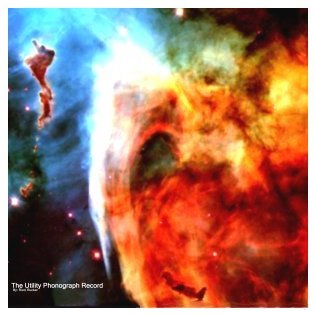

![]()
Side One: Introduction / Scratch Beat Snippet / Samples / -50% Scratch Samples / Locked Groove Percussion Side Two: Introduction / Scratch Drum / Vintage Synth Samples / Vintage Synth Samples / Scratch Samples Summary written by Ricci Rucker When using the turntable as an instrument, the records become our sounds. How we arrange our sounds from the beginning, dramatically improves or hinders the results in the end. Designing a scratch record is an art, although, recently, it's been used as a get rich quick scheme by people abusing simple formulas and saturating the market with useless records. Compile the same samples + thoughtless arrangment + a silly name = scratch record. Of course, after they collect the loot, they return with the same record arrnged slightly different than the last which wasn't anything new in the first place. That's the process in general, and I'm giving it to you bluntly.To design a scratch record is to construct in a reverse engineering process. One must have an idea of what they want to do, before they can arrange a scratch record. Let me give you a quick example of what I mean. If I wanted to perform scratch drums at a slow tempo, I'd have at least 2 choices. One, I'd arrange some kick snare drums at an average tempo of 90bpms, then just drum live, slowly. Or two, I'd arrange the kick and snare further apart from each other. Why would I choose the second method? When scratching, you are working against the turntables rotation, the less you work against the tables natural rotation, the easier you attain a fuller more controlled sound. If I arrange the kick and snare further apart from each other, I'd get fuller sounding drums since I wouldn't have to pause the drums constantly to stay on beat, and the time between the kick and snare would already be about the same tempo I'm drumming at. This would allow me to not cut the natural sustain of the drums. The key is to work with the turntables moving platter, and the record being designed to put yourself, the turntable, and the sounds in sync to create a fluid motion, thus a fluid sound. That's just one example of the many little details that come with making a useable scratch record. I designed The Utility Phonograph Record between December 2001 - February 2002, for myself. Almost 2 years later, it's finally hitting the stores. Until now, most scratch records have been designed without the specific idea of how the record will be used live. Since this record was arranged by hand without a sequencer, sample per sample, I was able to place sounds in ways that would of otherwise not been attempted working within the parameters of a sequencer. The drum kits (vintage and recent), along with a majority of the sounds were sampled directly from the actual instruments. The main reason for this was to maintain sound integrity. One huge gripe I've had with scratch records is many of them use samples from wax that they've already used. When trying to use these records at a show, the drums for instance, usually don't hit very hard. Sampling from wax is cool if it's the right sound, but most scratch records never see a mastering studio and are mastered in the bedroom and then are put directly to wax. Not only did I use most of the samples from the main source, but this was mastered professionally to bring you maximum blastability. The drum kits were retweaked to create various unique sequences to be used live, or sampled by any sound designer for their own production. The drum kits range from dry, wet, and distorted, arranged in a way that flows in and out of each style of drum kit. Vintage synths were also sampled directly and arranged with other drum sequencers using the "12 o'clock" method (every revolution is either a drum sequence or a synth sequence). Locked grooves are also utilized on this record. By locking different percussion and hi hats, the user, or users, can perform their music live without "wasting" someone's talent by having them just doing the hi hats. This also can be used as a practice metronome, or scratched for percussive studio application. Some of the drum/vintage synth sequences were arranged so that wth each revolution, a new synth, or new drum sequences plays. This is based off the skipless concept, but this isn't meant to be skipless. This is meant as a permanent marker for live and improv performance so you know when new similar sounds will play. There are many little arrangement attributes that I've applied all over the record that words won't do justice. To really appreciate the arrangements, you have to use the record. Also featured are locked groove beats that when played on turntables with a -50% pitch control, can loop one bar beats at about 60 bpms, as opposed to the usual half bar beats at the same tempo. Can't forget the scratch beat, and a bunch of other features that you can easily put to work. This record was constructed with patients and forethought. If you are a scratch musician. or a sampled based producer, I'd find it hard to believe that you won't be able to use this record to your own benefit. |